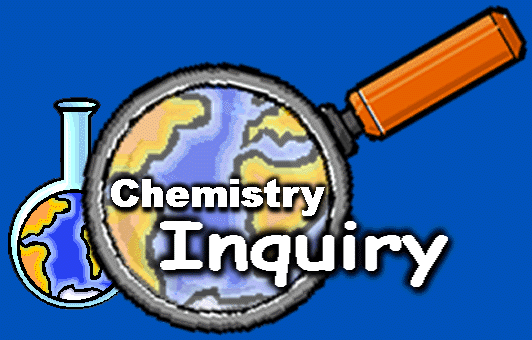How to Teach Easily and Effectively Using Guided Inquiry
Teaching chemistry by guided inquiry is simple! To show you what I mean, let me put you in the seat of a student. If you have 5-10 minutes I can walk you through a short session that I've done with many teachers from all over the United States.
First, download the two worksheets called "Vierlong Proteins" and "Montillation of Traxoline" The topic is not a traditional chemistry topic :-) For this demonstration to be effective the topic needed to be a little nontraditional! So download the worksheets, print them, and take a few minutes to complete the 4 questions on the first worksheet called "Vierlong Proteins." Save the Traxoline questions for later.
Now watch the following video of me debriefing the worksheet with you.
Countless studies demonstrate that guiding students into constructing knowledge is much more effective than "telling" them everything they need to know. In addition, teaching in the way I've demonstrated above will allow you more time to prepare labs and more time to help students. You will have more time to prepare other lessons and demonstrations. You won't feel exhausted at the end of the day! And none of the benefits will come at the expense of your students. In fact, your students will learn more effectively and become more successful.
The ChemQuest worksheets are the backbone of the curriculum. These are not your typical worksheets. So that you can see for yourself the difference they make, I have made available several sample ChemQuests that you can download, print, and try with your students.
The following video shows how the "Atomic Structure" ChemQuest is constructed. I also explain how to use the "Atomic Structure" ChemQuest in my classes. Click here to download the worksheet. It might be helpful to print it also. Then watch the short video below to see how the ChemQuests are constructed to maximize student learning...
As you have seen, using ChemQuests is easy and effective. After briefly introducing the topic I hand out the ChemQuest worksheet and the students work in groups of 3 or 4. As they complete the ChemQuest they construct meaning for many concepts and I make my way around the room to help them with any difficult questions they have, being very careful to guide them instead of telling them the answers. As I do this I am also helping to keep them on task. Everything usually goes very smoothly, which frees me up. Instead of listening to me talk, all the students are working hard and straining their brains. Often they will debate with each other and that reveals just how engaged they are. While they are working, I often seize the opportunity to work on preparing a lab or researching a demonstration that I'd like to do, while keeping one eye on the students while occasionally walking through the classroom to make sure all is well. Since I began teaching this way, I have some valuable minutes that I never had before!
Some other things happened since I started teaching this way. The number of students taking my chemistry classes has tripled. They perform better on assignments and tests. They enjoy the class. Instead of seeing some students begin daydreaming I see them thinking. My job is more rewarding!
Many times the students are working until the bell rings. Any time they don't have their worksheets finished, they must finish them at home.
The next day, I debrief the worksheets. I know that the students did their work yesterday (because I was checking as I walked around the room), so I usually just check quickly to make sure they are finished with them. Because I watched them work on the ChemQuest worksheets yesterday, I have a good idea of what was difficult for them and I can give them instant feedback. As I go over the ChemQuest with the class, I spend extra time on their difficulties. I answer any questions they have and fill in any gaps that the worksheets didn't help them fill in for themselves.
After debriefing the ChemQuest, I give them some practice problems ("Skill Practice" worksheets) to help them sharpen and develop what they began to learn the previous day. The ChemQuests teach students, and the Skill Practice reinforces the concepts. If the previous day's assignment was one of the easier assignments, I sometimes will skip the Skill Practice and move into the next ChemQuest. The students again work together and anything not done by the end of the hour needs to be finished as homework. The next day, I will either go over the Skill Practice worksheet or collect it for a grade, then assign the next ChemQuest and the process repeats itself.
The many ChemQuests and Skill Practice worksheets build the backbone of a complete curriculum. And you have the option of purchasing all the tests and even video instruction! In "Package B" and "Package C" I'm giving away the labs that I use in the classroom as a free bonus. (Visit the ordering page for the purchase options.) You might still want to use an occasional lecture--I give lecture notes maybe two or three times per year. But these guided inquiry worksheets will replace most lectures and keep your students engaged more than ever!
Well, that's a brief overview. It's quite hard to explain it all in a few paragraphs and videos. Please contact me with any questions you may have.

